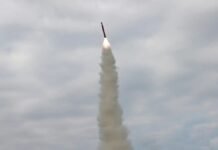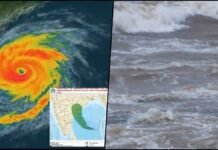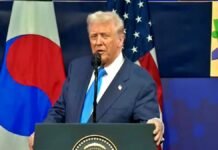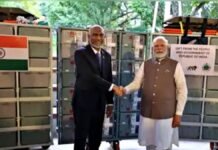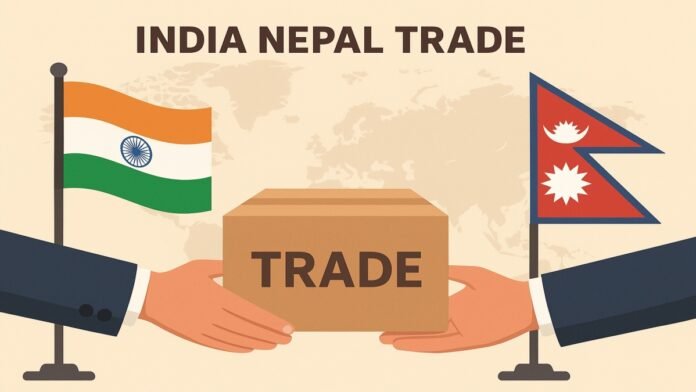
Key Points:
- Prime Minister KP Sharma Oli resigned on September 9, 2025 after deadly anti-corruption protests killed at least 22 people
- Supreme Court, parliament, and government buildings set on fire by Gen Z protesters who defied curfews
- India-Nepal trade worth $8.5 billion in FY 2024-25, with Nepal ranking as India’s 14th largest trading partner
- 900 prisoners escaped from two facilities in western Nepal during the chaos
- Military deployment ordered to restore order as protests continue despite PM’s resignation
New Delhi: The political crisis engulfing Nepal has reached unprecedented levels, with Prime Minister KP Sharma Oli stepping down on September 9, 2025, following the most severe civil unrest the Himalayan nation has witnessed in decades. The resignation came after at least 22 people were killed and over 300 injured during violent clashes between security forces and predominantly young protesters.
Latest Developments in Nepal Crisis
The protests, dubbed the “Gen Z movement,” began on September 8, 2025, after the government imposed a sweeping ban on 26 social media platforms including Facebook, WhatsApp, X, and YouTube. Despite the government quickly reversing this ban, the demonstrations escalated into a broader anti-corruption movement targeting Nepal’s political elite.
On September 9, protesters set fire to multiple government institutions, including the Supreme Court, parliament building, and the executive seat at Singha Durbar. The homes of the Prime Minister, President, and various ministers were also targeted and burned. Military helicopters were deployed to evacuate politicians to safety, with some seeking refuge at Tribhuvan International Airport.
The violence has resulted in a complete breakdown of law and order, with 900 inmates escaping from two correctional facilities in western Nepal during the chaos. The Nepalese Army has been deployed to restore order, warning that all institutions are prepared to take necessary action if the unrest continues.
Economic Implications for India
Nepal’s political instability poses significant economic risks for India, given the substantial trade relationship between the two nations. According to the latest official data, bilateral trade reached $8.5 billion in FY 2024-25, with India exporting $7.33 billion worth of goods while importing $1.20 billion from Nepal.
Trade Statistics and Trends
Nepal has emerged as India’s 14th largest export destination, a remarkable improvement from its 28th position a decade ago. This growth reflects the deepening economic integration between the neighboring countries, with Indian exports constituting approximately 16% of Nepal’s total GDP.
Nepal’s exports to India have shown dramatic growth in recent months, with a 112.6% increase to NPR 200.9 billion in the first eleven months of FY 2024/25. The standout performer has been soybean oil, which saw exports surge to NPR 93.5 billion from just NPR 901.8 million the previous year.
Key Trade Products
Indian exports to Nepal primarily include petroleum products, machinery, vehicles, food items, chemicals, and electronics equipment. These exports are crucial for Nepal’s economy, given the country’s landlocked status and dependence on India for essential supplies.
Nepal’s exports to India consist mainly of soybean oil, spices, jute products, tea, polyester yarn, plastic utensils, and footwear. The recent surge in soybean oil exports has been particularly significant, accounting for nearly 47% of Nepal’s total exports to India.
Regional Security Concerns
The crisis in Nepal adds to India’s growing concerns about instability in its neighborhood, following recent upheavals in Sri Lanka, Bangladesh, and Afghanistan. The open border between India and Nepal, spanning multiple districts in Bihar and Uttar Pradesh, means that any political or economic disruption in Nepal directly impacts India’s border regions.
The protests lack organized leadership and appear to be largely spontaneous, driven by youth frustration over limited job opportunities, corruption, and nepotism among the political elite. Many young Nepalis have been forced to seek employment in the Middle East, South Korea, and Malaysia, sending remittances back home to support the economy.
International Response and Future Outlook
The United Nations human rights chief, Volker Türk, has called for an investigation into the deaths and the “disproportionate use of force” by Nepali security forces. Human Rights Watch has documented the use of lethal force against largely peaceful protesters, many of whom were students in school and college uniforms.
Despite PM Oli’s resignation, protesters continue to demand broader reforms, with no clear successor in sight, creating a dangerous power vacuum. The military’s warning about taking “all necessary measures” if unrest continues has raised fears about potential martial law.
The situation remains highly volatile, with implications extending far beyond Nepal’s borders. For India, the crisis threatens not only bilateral trade worth billions of dollars but also regional stability in South Asia. The economic interdependence between the two nations means that Nepal’s political instability could have cascading effects on trade, investment, and cross-border cooperation in the coming months.



